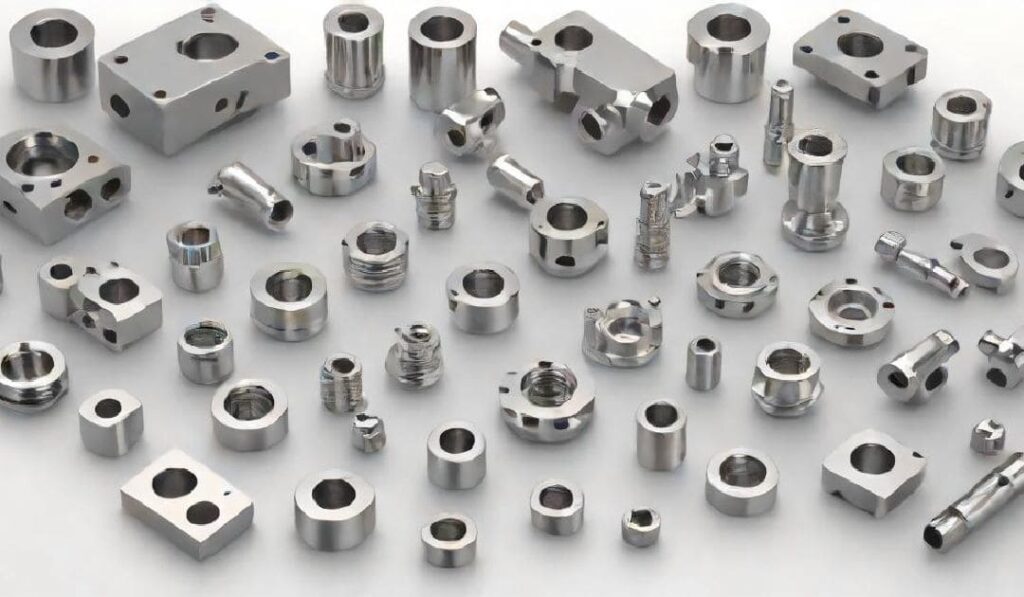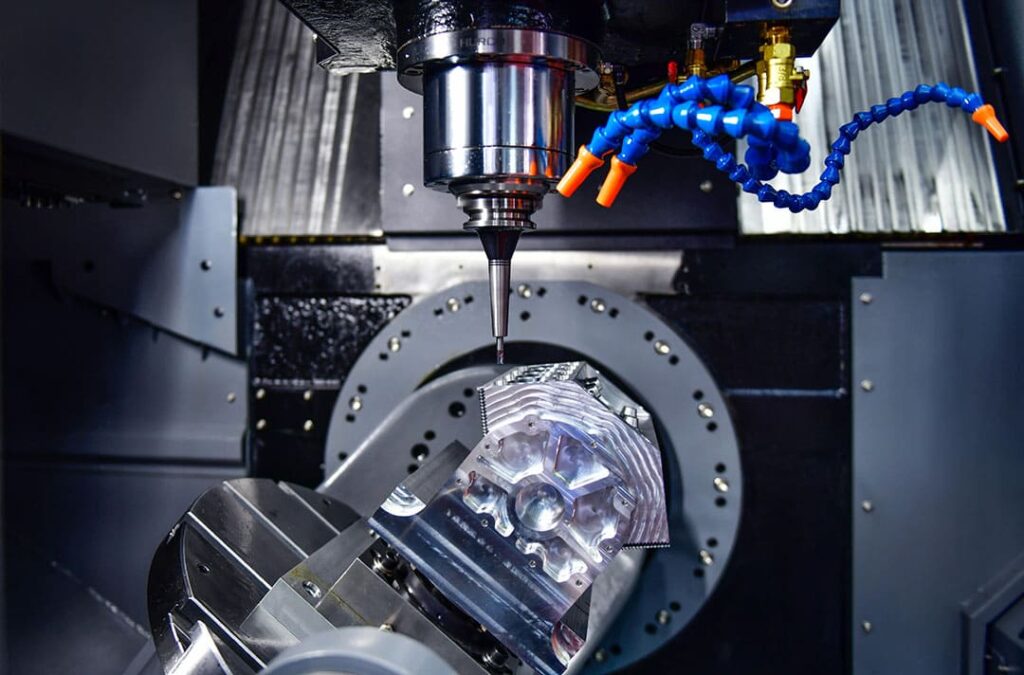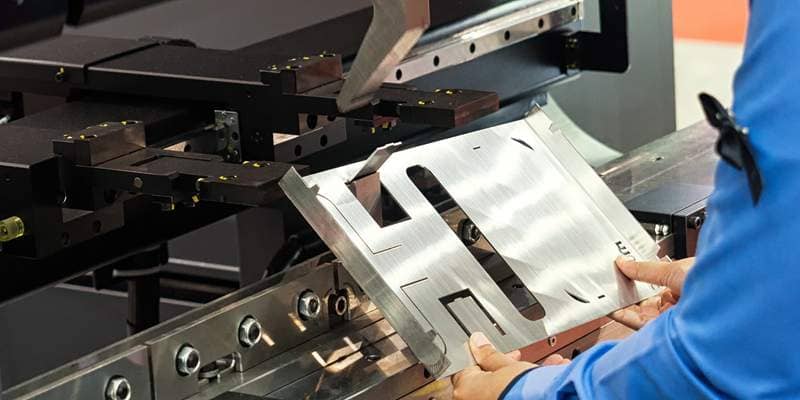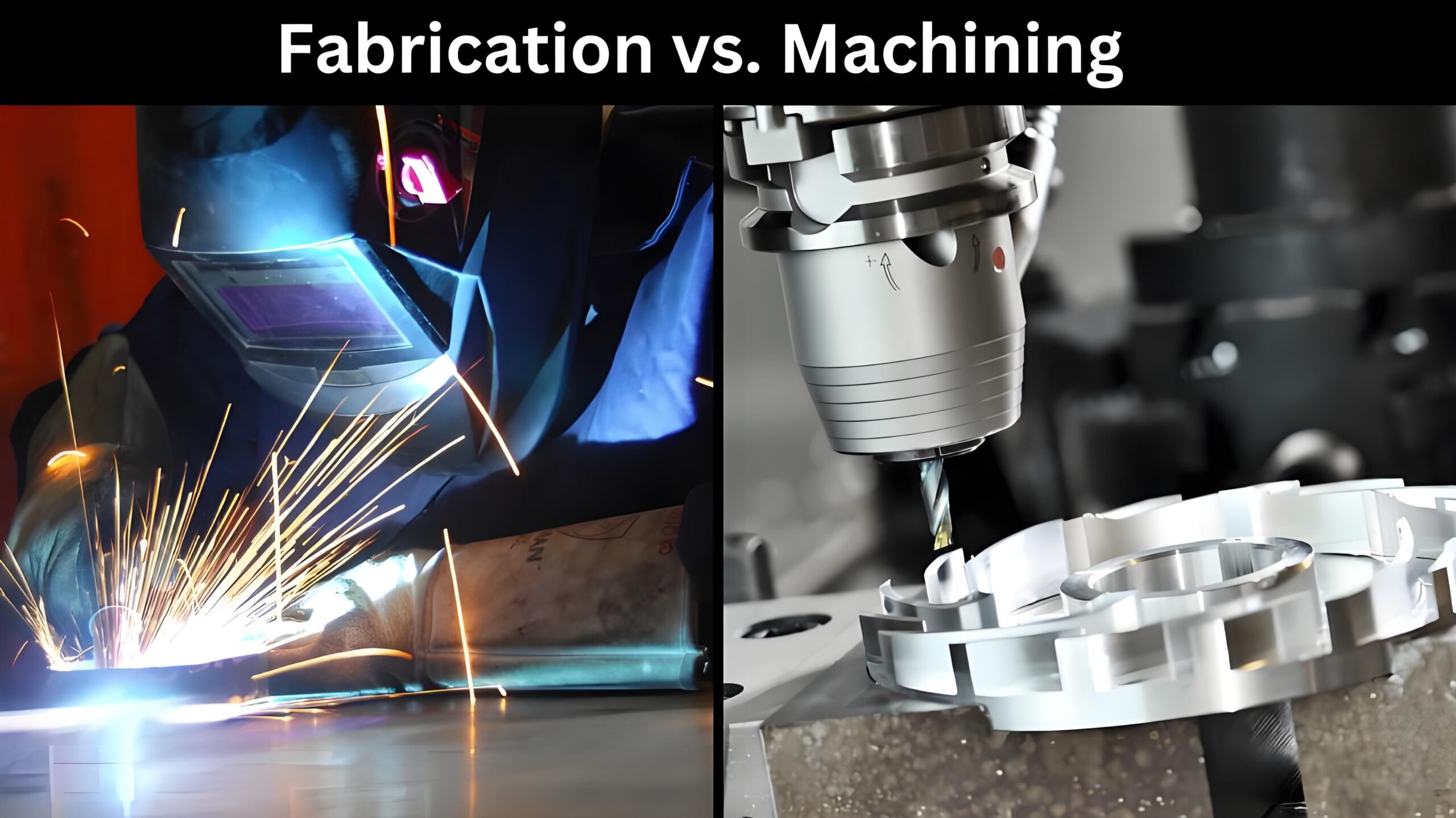CNC Parts vs. Sheet Metal Parts: Comparison and Selection
CNC parts and sheet metal parts are two common precision parts used in the manufacturing industry. They differ greatly in materials, production methods, and applications. Understanding these differences is essential to choosing the manufacturing technology that best suits a specific need. This article will provide an in-depth comparison of CNC parts and sheet metal parts to help readers make an informed choice.
1.Introduction to CNC machining and sheet metal processing
1.CNC machining
CNC machining is a subtractive manufacturing process that is specifically designed to produce CNC parts, using tools such as lathes, milling machines, drill presses, and grinders. Software controls the tools and operates them precisely and repeatedly, ensuring dimensional accuracy and consistency for every CNC part. CNC machining is ideal for producing parts with complex shapes or tight tolerance requirements, and is popular in industries such as aerospace, automotive, and medical.
2.Sheet metal processing
Sheet metal fabrication is a manufacturing process that processes thin sheets of metal into parts and products. It involves multiple steps such as cutting, bending, punching, and welding. It is a popular choice because it provides a low-cost solution for the mass production of metal parts. It is widely used in industries such as construction, HVAC, and appliances.

2.The difference between CNC parts and sheet metal parts
(I) Materials
CNC parts are usually made of solid blocks or blank materials, such as metals such as steel, aluminum or titanium. Excess material is removed through cutting, drilling, milling or turning operations to form the required CNC parts.
Sheet metal parts mainly use thin and flat metal sheet materials such as stainless steel, aluminum, brass or copper. They can be easily formed, bent or cut to form complex shapes.
(II) Production process
The production of CNC parts relies on advanced CNC machine tools such as lathes, milling machines or drilling machines. Precise material removal according to predetermined designs, including operations such as milling, turning, drilling, reaming and tapping. CNC machine tools follow specific tool paths to achieve the required shape, size and surface finish of the parts.
Sheet metal manufacturing involves processes such as cutting, bending, welding and assembly. The metal sheet is first cut to the required size, then bent or formed, welded and connected to multiple parts, and finally finished.
(III) Complexity and precision
CNC parts have high precision and strict tolerances. CNC machine tools have excellent precision, ensuring consistent dimensions and surface finish. It is often the preferred method for manufacturing parts that require intricate details, fine features or tight tolerances.
Sheet metal parts have complex geometries. Sheet metal processing is highly flexible and can produce prototypes, small batches or large-scale production, but the accuracy is relatively low.

(IV) Strength and structural integrity
The strength of CNC parts depends on material selection and processing operations. Solid blocks of metal are inherently strong, and processing technology can further enhance structural integrity. Used in industries with strict requirements on strength, load-bearing capacity and precise fit.
Sheet metal parts generally have inherent strength and structural integrity. Bending, folding and welding operations provide rigidity and durability, and are often used in applications with strict requirements on strength and rigidity.
3.Comparison between CNC machining and sheet metal machining
(I) Precision
CNC machining can produce CNC parts with higher precision and consistency than sheet metal machining, and can produce parts with more complex shapes and tighter tolerances, making it an ideal choice for manufacturing difficult-to-machine parts.
(II) Cost-effectiveness
Sheet metal machining is more economical for large-scale production. It is faster and requires fewer steps than CNC machining.
(III) Material type
CNC machining can process a variety of materials, including metals, plastics, and composites. Sheet metal machining is limited to metal materials. If the part requires non-metallic materials, CNC machining is a better choice.
(IV) Output
When the production volume is large, sheet metal machining is usually a better choice, and parts can be mass-produced quickly and efficiently. When the production volume is low, CNC machining may be more suitable, and parts with higher precision and consistency can be produced.
(V) Delivery time
CNC parts usually have a shorter delivery time than sheet metal machining, and CNC machining is a better choice for parts with tight delivery time.

(VI) Surface finish
When a specific surface finish is required, CNC machining is often a better choice because CNC parts have a finer surface finish than sheet metal parts.
(VII) Automation
CNC machining has a higher degree of automation than sheet metal machining, which can achieve faster and more consistent production. Computer-controlled machines can perform operations with high precision and accuracy, which is particularly useful for parts that require high precision and consistency.
4.When to use CNC machining?
CNC machining is usually more suitable for the following situations:
(i) Complex shapes
It is more suitable for producing CNC parts with complex shapes and can handle complex designs and strict tolerances.
(ii) Material types
It can handle a variety of materials, such as metals, plastics and composites, and has a wider range of applications.
(iii) Precision and accuracy
CNC parts are known for their high precision and accuracy, and are more suitable for producing parts that require strict tolerances and precise specifications.
(iv) Surface treatment
It is more suitable for producing parts with higher surface finish and can achieve smoother surface treatment.
(v) Low production
For the production of small batches of parts, CNC machining may be a better choice, producing parts with high precision and consistency without changing molds.

5.When to use sheet metal processing?
Sheet metal processing is usually more suitable for the following situations:
(I) Cost
Sheet metal processing is usually more economical than CNC processing, especially when mass production, sheet metal materials are cheaper, production processes are fewer, and costs are lower.
(II) Production speed
For some parts with simple designs, sheet metal processing may be a faster choice. Processes such as stamping, punching, and bending can manufacture parts quickly and efficiently without complex programming or molds.
(III) Material type
Suitable for the production of parts made of metal materials such as aluminum, steel, and copper.
(IV) Part size
For the production of larger parts, especially those with simple designs, sheet metal processing may be a better choice.
(V) Quantity
Sheet metal processing is usually a better choice for mass production of parts, especially those with simple designs.

Conclusion
While both sheet metal and CNC machined parts are important in manufacturing, the two differ significantly in materials, processes, complexity, precision and strength. Understanding these differences can help you choose processing services wisely.
If you’re looking for a machining manufacturer, look no further than Xavier. Xavier specializes in CNC machining and sheet metal machining to meet your needs. Its team is well-equipped to provide quality CNC machining solutions. Feel free to contact us anytime for more information or to discuss processing needs.
